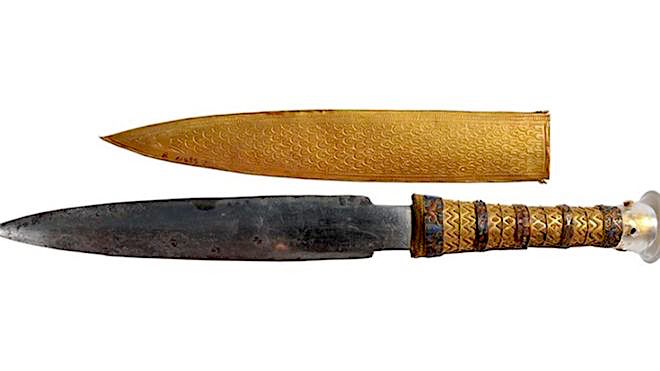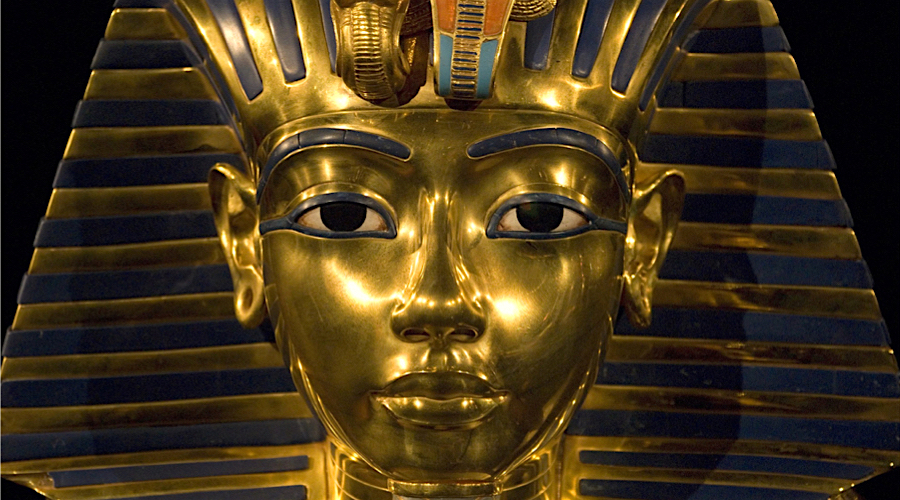A dagger buried alongside legendary Egyptian King Tutankhamun was made with iron extracted from a meteorite, researchers have determined — a form of metal so prized by ancient Egyptians that they called it “iron from the sky.”
Using X-ray fluorescence spectrometry, a team of Italian and Egyptian experts led by Daniela Comelli of the Polytechnic University of Milan, analyzed the blade and found that it has a similar composition to metallic meteorites, the research published this week in the journal Meteoritics & Planetary Science shows.
The high manufacturing quality of the blade in comparison with other simple-shaped meteoritic artefacts suggests a significant mastery of iron working in Tutankhamun’s time, say researchers.
The dagger, which was discovered in 1925 among the folds of the wrapping around the mummified boy pharaoh, has long intrigued historians and archaeologists for both, its beauty and composition.
The piece, which has a gold and crystal handle, as well as an ornate sheath, has also has baffled scientists because iron was supposed to be a very rare metal used by ancient Egyptians.
This week’s paper confirms such a theory, as it says that the presence of iron —along with levels of nickel and cobalt — “strongly suggests an extraterrestrial origin.”
However, the high manufacturing quality of the blade in comparison with other simple-shaped meteoritic iron artefacts “suggests a significant mastery of ironworking in Tutankhamun’s time”, the researchers say.

They compared the composition of the dagger to known meteorites within 2,000km around the Red Sea coast of Egypt, and found that one in particular — which landed 240km (150 miles) west of Alexandria — contained similar levels of nickel and cobalt.
Probably one of the best known pharaohs of ancient Egypt, Tutankhamun was a minor figure in ancient Egyptian history. The boy king of the 18th Egyptian dynasty reigned eight to nine years and accomplished little, but the discovery of his nearly intact tomb in 1922 has led many to attempt unravel the mystery of his life and death.
His dagger can currently be seen at the Egyptian Museum in Cairo.

